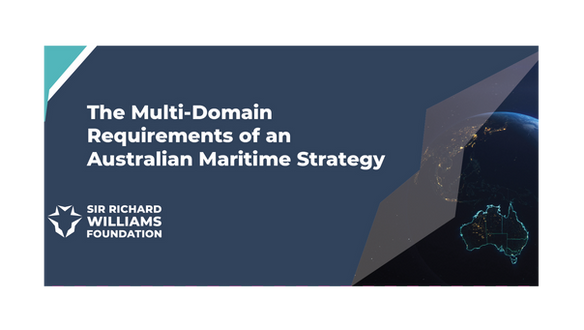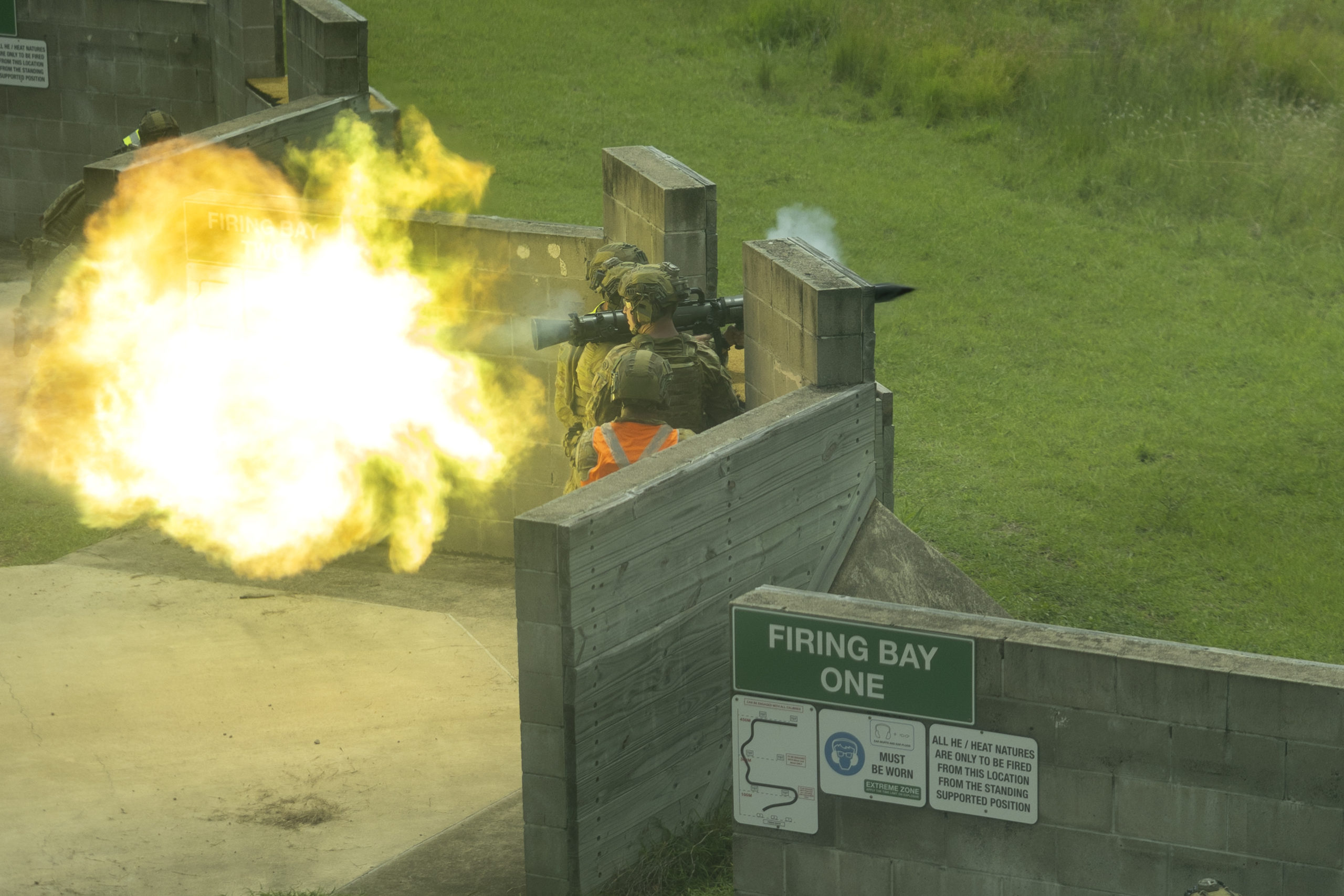By Robbin Laird
The first of two seminars of the Sir Richard Williams Foundation in 2024 was held on 11 April 2024 at the National Gallery of Australia.
The seminar was entitled, “The Multi-Domain Requirements of an Australian Maritime Strategy”, and the aim of the seminar was identified as follows:
“To examine the enduring and emerging multi-domain requirements of an Australian maritime strategy in the context of the Defence Strategic Review. The Seminar examines the requirements through a Defence lens but will consider all national means that contribute to a maritime strategy and the need for coherence across concepts, doctrine, equipment, basing and preparedness. This strategic coherence is needed to synchronise effects across the Whole of Australian Government, Defence and industry, as well as international partners.”
Last year’s DSR highlighted the ramped-up threat to Australia and the need to focus on the region, its partnerships and the need to build a more effective defence effort by Australia in the regional deterrence context. The focus of the government in its subsequent priorities has tended to focus on longer term acquisitions, first in terms of nuclear submarines through the AUKUS relationship and then for a new surface fleet in its recently released surface fleet review.
A multi-domain operations discussion builds on the work of the Foundation during the time I have been writing the reports since 2014. The focus has been upon building a fifth-generation force, which after all revolves around sensor-shooter relationships built across an integrated force delivering multi-domain effects or what I prefer to call a kill-web enabled force.
The focus is upon how you get full value out of your force now and to build out that extant force in the future to become more lethal and survivable. If you are focused on the fight tonight, which any credible combat force must focus on, then long range assets are projections of the possible, not augmentations of the credibility of the operational force.
So any multi-domain discussion inevitably focuses on the way ahead for the force in being, rather than a force planning discussion of a projected future.
When you add a specific target of what is that force in being operating in support of, inevitably gaps are identified, and the question then is how do you close the most significant gaps which threaten your security and defence interests. Such a focus is in turn raised if one raises the question of the means to the end of what one might consider a maritime threat envelope and strategy to deal with that envelope.
In other words, one would expect the seminar discussion to focus more on the transition challenges of the ADF and the nation to deal with threat environment in the near to midterm rather than in 2040.
That is what happened at the seminar in which speakers started by highlighting the importance of focusing on the here and now rather than on the force that might exist in 2035 or 2040. After the initial presentations focused on the current challenges and the role of the ADF and the nation to prepare to deal with them, the discussion shifted to whether Australia had a maritime strategy and if so what were the priorities of such a strategy.
The majority of the presentations focused on specific services or industrial perspectives of how best to meet the multi-domain requirements for the evolving Australian defence challenge.
But at the heart of the discussion was really the major challenge facing Australia: how to close defence gaps? How to engage the nation beyond the ADF in the broader defence challenges facing Australia? How to build a sustainable force?
In later articles, I will provide detailed looks at the presentations and how the presenters dealt with these and other issues associated with the transition of the ADF. But here I am going to focus on the key issue of how does the ADF get more capable in the next three-to-five years and to do so in a way that is a prologue to the anticipated force transformation being designed?
Peter Jennings was the first speaker and he underscored that the DSR had highlighted the near-term threats but was putting its money in forces a decade away.
He put the challenge as follows:
Governments can and do promise to spend unbelievable quantities of money on the future force but you only know what you get when you open the box.
Not one cent of it buys deterrence today.
From a deterrence perspective there is potentially some risk in promising strong deterrent capabilities in the future while maintaining the military capabilities of a skinned cat in the present day.
That is the risk of pre-emption. Indeed, one reason why analysists are so worried about a mid- to late-2020s risk of conflict against Taiwan, or in the South China Sea, is that Xi Jinping may calculate that he faces a ‘use it or lose it’ choice with the PLA.
Xi’s best chance of strategic success to achieve unchallenged military dominance in the Pacific are maximised by early action before his opponents’ next generation military capabilities are realised and while the democracies are internally distracted and divided.
The tragedy is that there is so much which could be done with a bit of political and Defence push to strengthen ADF and national capabilities in the relative short term.
For example:
- Ramping up domestic ammunition production and stockpiling.
- Establishing offensive drone capabilities on the basis of existing technology – not everything has to be quantum, AI, hypersonically joint and enabled.
- Funding some of the incredibly smart military capabilities that have been developed by Australian businesses.
- Researching some of the remarkable military and operational achievements which the Ukrainians (with allied help) and the Israelis have used in recent months.
- Here I’m not just talking about drones; but also optimising air defence capabilities; integrating intelligence and battlefield situational awareness; finding the right balance between exotic and more prosaic technology; working out how to get things in production in less than a decade.
There is so much that could be done, so much so, in fact that our failure to do any of this makes me wonder if it is not the case that the government and Defence establishment is actually getting what it really wants?
The second presentation was by Mike Pezzullo, the former Secretary of the Department of Home Affairs, who made an impassioned speech reminding the audience that building an effective defence structure is not simply the task of the ADF. The society needed to be engaged in shaping an Australia more capable of defending itself. You cannot outsource defence and security to an alliance or to the professional military for one needs to build a more resilient and sustainable Australian society and nation.
Jennifer Parker of the National Security College (ANU) provided a comprehensive look at the maritime security challenges facing Australia and argued that in fact there was no strategy to deal with these comprehensive challenges. Her talk focused attention on what is the demand signal and what is the product needed to deal with that demand signal for maritime security and defence.
Such an approach highlights what are the gaps to be met and how to meet them, which is quite different from force structure planning of an envisaged future force. Rather, one looks at demand drivers and what tools a nation has available to it, far beyond simply a professional military.
The remaining presentations provided insights regarding how the ADF is changing to deal with the evolving challenges and I will take a detailed look at these presentations and focus on them in later articles.
I will then return to the question of the match between the specific recommendations and the challenge of building an effective multi-domain force and sustainable society in dealing with the evolving threats and challenges.





